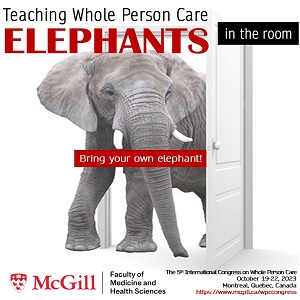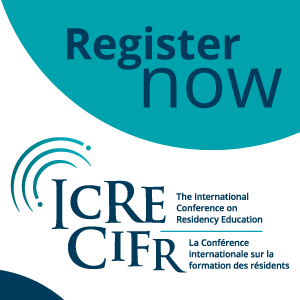Internal Medicine residents use heuristics to estimate disease probability
DOI :
https://doi.org/10.36834/cmej.36653Mots-clés :
Heuristics, Bayesian reasoning, Probability, ResidentsRésumé
Background: Training in Bayesian reasoning may have limited impact on accuracy of probability estimates. In this study, our goal was to explore whether residents previously exposed to Bayesian reasoning use heuristics rather than Bayesian reasoning to estimate disease probabilities. We predicted that if residents use heuristics then post-test probability estimates would be increased by non-discriminating clinical features or a high anchor for a target condition.
Method: We randomized 55 Internal Medicine residents to different versions of four clinical vignettes and asked them to estimate probabilities of target conditions. We manipulated the clinical data for each vignette to be consistent with either 1) using a representative heuristic, by adding non-discriminating prototypical clinical features of the target condition, or 2) using anchoring with adjustment heuristic, by providing a high or low anchor for the target condition.
Results: When presented with additional non-discriminating data the odds of diagnosing the target condition were increased (odds ratio (OR) 2.83, 95% confidence interval [1.30, 6.15], p = 0.009). Similarly, the odds of diagnosing the target condition were increased when a high anchor preceded the vignette (OR 2.04, [1.09, 3.81], p = 0.025).
Conclusions: Our findings suggest that despite previous exposure to the use of Bayesian reasoning, residents use heuristics, such as the representative heuristic and anchoring with adjustment, to estimate probabilities. Potential reasons for attribute substitution include the relative cognitive ease of heuristics vs. Bayesian reasoning or perhaps residents in their clinical practice use gist traces rather than precise probability estimates when diagnosing.Statistiques
Téléchargements
Publié-e
Comment citer
Numéro
Rubrique
Licence
La soumission d’un manuscrit original à la revue constitue une indication qu’il s’agit d’un travail original, qu’il n’a jamais été publié et qu’il n’est pas envisagé pour publication dans une autre revue. S’il est accepté, il sera publié en ligne et ne pourra l’être ailleurs sous la même forme, à des fins commerciales, dans quelque langue que ce soit, sans l’accord de l’éditeur.
La publication d’une recherche scientifique a pour but la diffusion de connaissances et, sous un régime sans but lucratif, ne profite financièrement ni à l’éditeur ni à l’auteur.
Les auteurs qui publient dans la Revue canadienne d’éducation médicale acceptent de publier leurs articles sous la licence Creative Commons Paternité - Pas d’utilisation commerciale, Pas de modification 4.0 Canada. Cette licence permet à quiconque de télécharger et de partager l’article à des fins non commerciales, à condition d’en attribuer le crédit aux auteurs. Pour plus de détails sur les droits que les auteurs accordent aux utilisateurs de leur travail, veuillez consulter le résumé de la licence et la licence complète.











